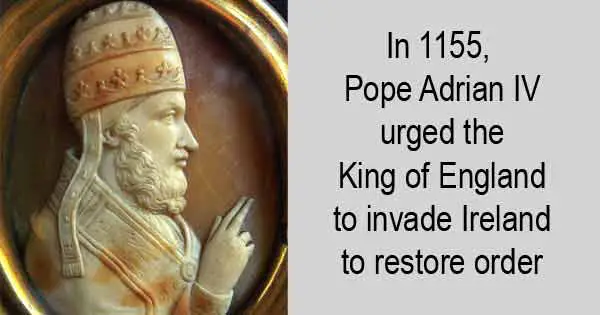Up until the Norman invasion in 1169, the Irish hadn’t had one true national leader since the death of Brian Boru during the Battle of Clontarf in 1014. And even Brian never had full control over the whole country.
the_Normans_in_text.html
Following his death, Ireland was ruled by a number of local and regional kings or chieftains.
Over the next two centuries, other European countries developed a more centralised system which was to give them greater political and military power. Countries such as England, France and Spain developed the most mature, stable and powerful kingdoms that they had ever had.
Kings in these European kingdoms had expanded their territories outwards until they ruled over their entire country. This gave them great strength and security against foreign threats as well as vast revenue streams, enabling them to fund further military campaigns.
Ireland fragmented under regional leadership
Meanwhile, Ireland remained fragmented under regional leadership and so didn’t have a unified, centralised system to protect it against foreign invasion.

The Catholic Church in Ireland was also experiencing difficulties which would become significant in terms of invasion.
Pope Gregory VII declared his intention that the church should be run in a way similar to the great European kingdoms with the addition that, as leader of the church, the Pope would be the ruler of everything.
The church in Ireland at the time was prone to scandals. This included corruption and the sexual exploits of members of the clergy.
Many bishops in Ireland were desperate to bring order and respectability. They worked closely with Rome to clean up the church in Ireland. It was a long and difficult process as clergy in wealthy parts of the country such as Armagh were not keen to tone down their lifestyles.
Pope gave England permission to invade Ireland
In 1155, Pope Adrian IV was keen to increase his control over Ireland and provided King Henry II of England with a letter known as ‘Laudabiliter’ which gave him permission to invade Ireland and restore order.
Henry didn’t invade despite receiving papal approval because the time was not right for him. He was too busy campaigning in France and had a number of other priorities.
However, the Laudabiliter was significant as it gave the Normans an excuse – a moral right as they saw it – to invade Ireland if and when the time was right to do so.
That time arrived in 1169 when the King of Leinster, Diarmait MacMurrough, was forced out of his territory by a rival king, Rory O’Connor of Connacht.
MacMurrough asked for Henry’s help to regain his kingdom and was given permission to recruit forces from Norman knights in England and Wales.
With the help of significant Norman forces, including the infamous Strongbow, MacMurrough regained his kingdom.
Henry became worried about Strongbow
Henry became worried after MacMurrough died in 1171, leaving his son-in-law Strongbow to inherit the throne. This made Henry concerned that Strongbow was on the verge of becoming too powerful. Although the two men were allies, if things turned sour, Strongbow was gaining the potential to become a dangerous enemy.
Henry summoned Strongbow and they agreed that Strongbow would retain the position of King of Leinster. However, the key towns of Dublin, Waterford and Wexford would belong to the English crown.
Henry visited Ireland, arriving with a vast fleet of ships in a show of strength and the Irish kings submitted to him. The real reason the English king first visited Ireland was not to take territory, but rather to remind the Normans in Ireland that he was still in charge.
the_Normans.html
